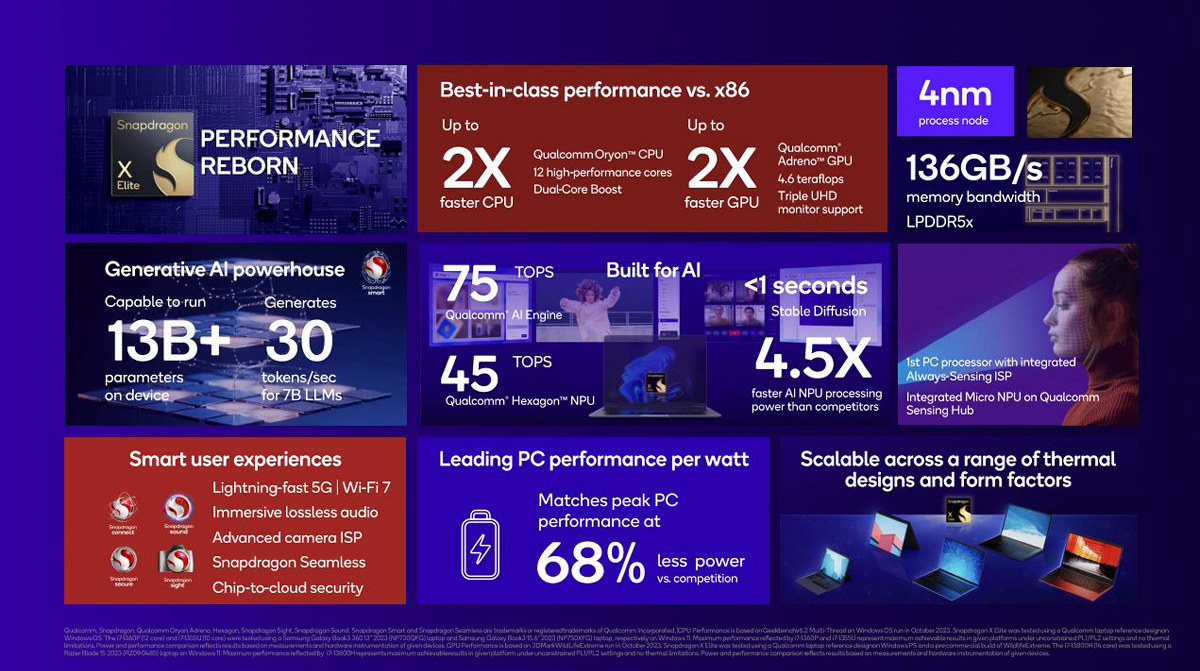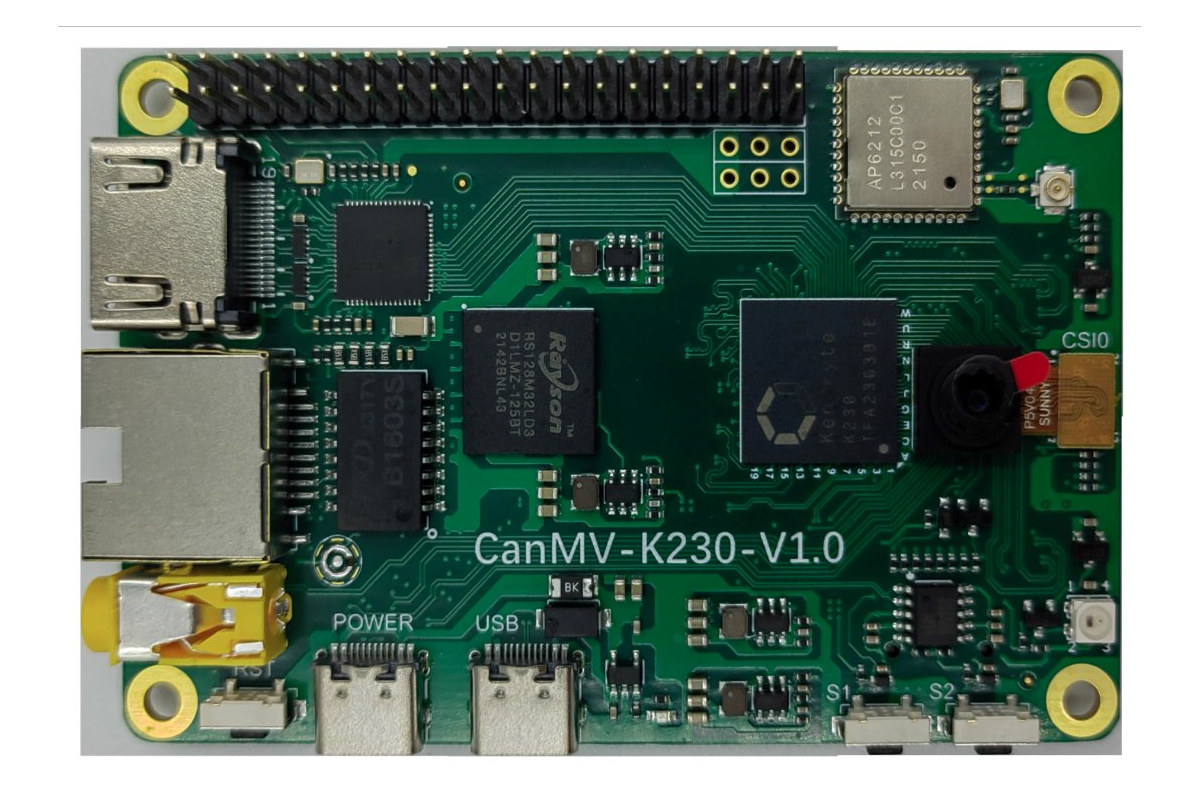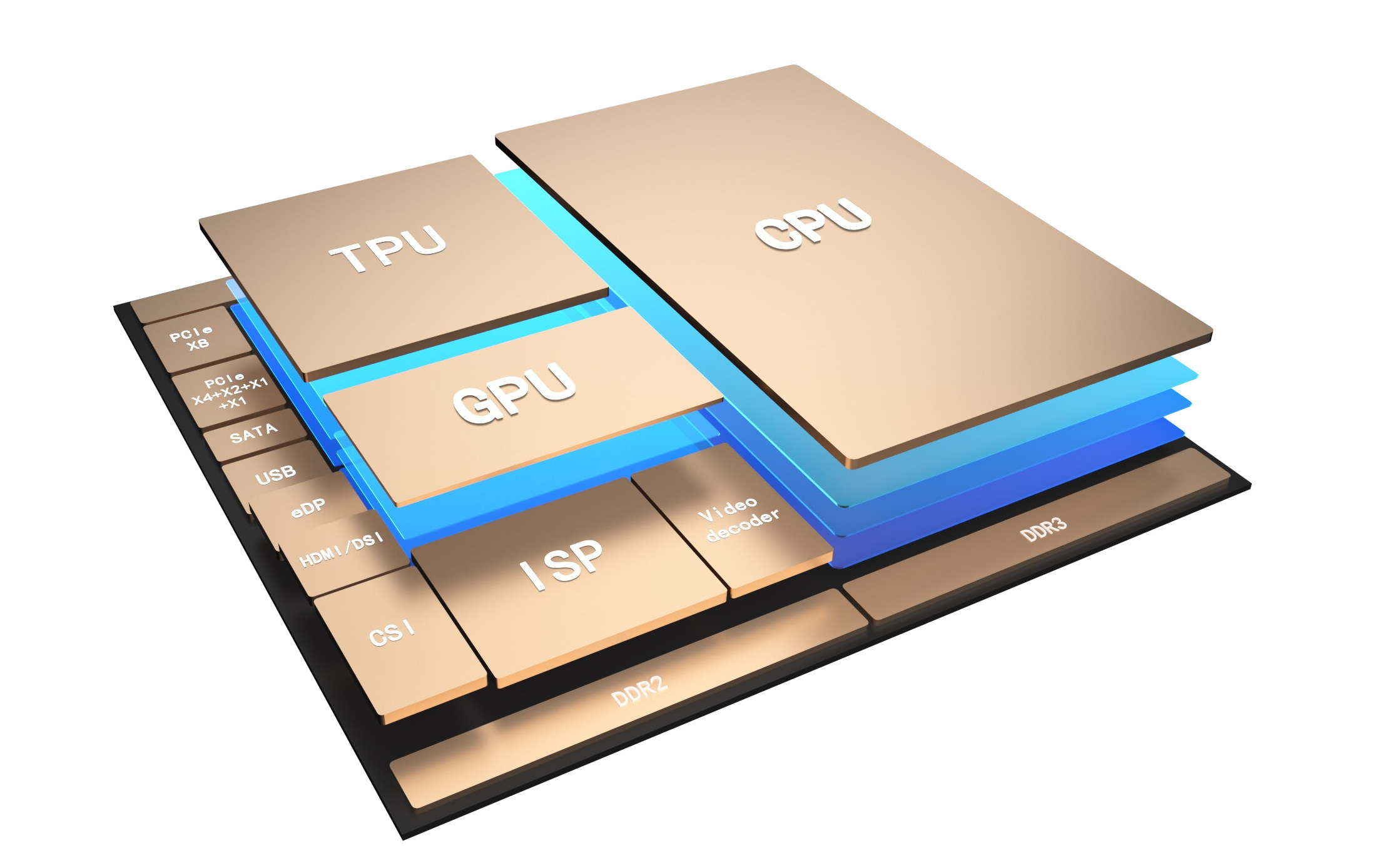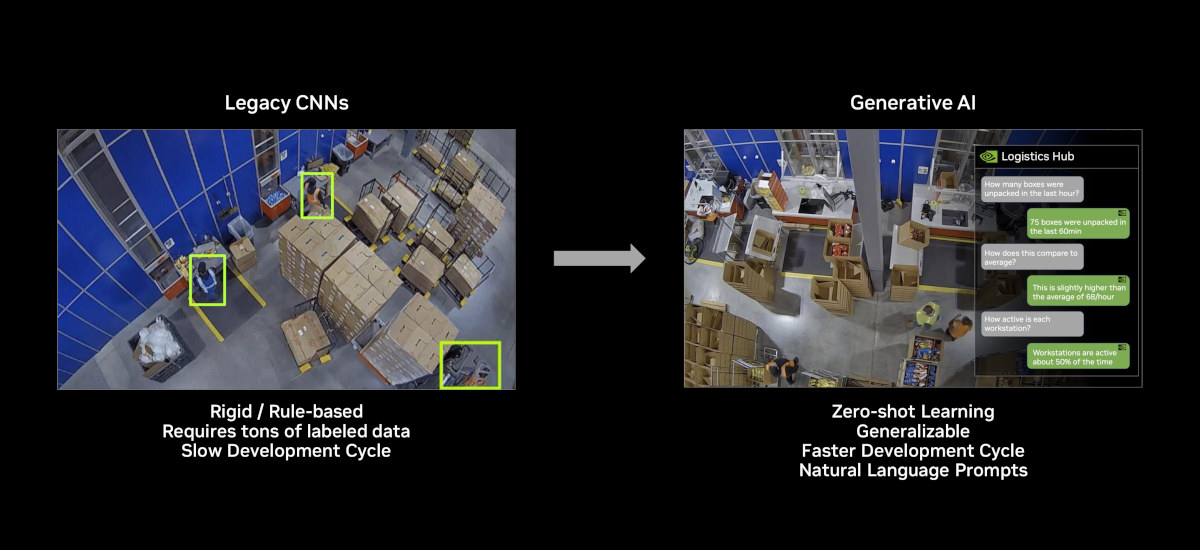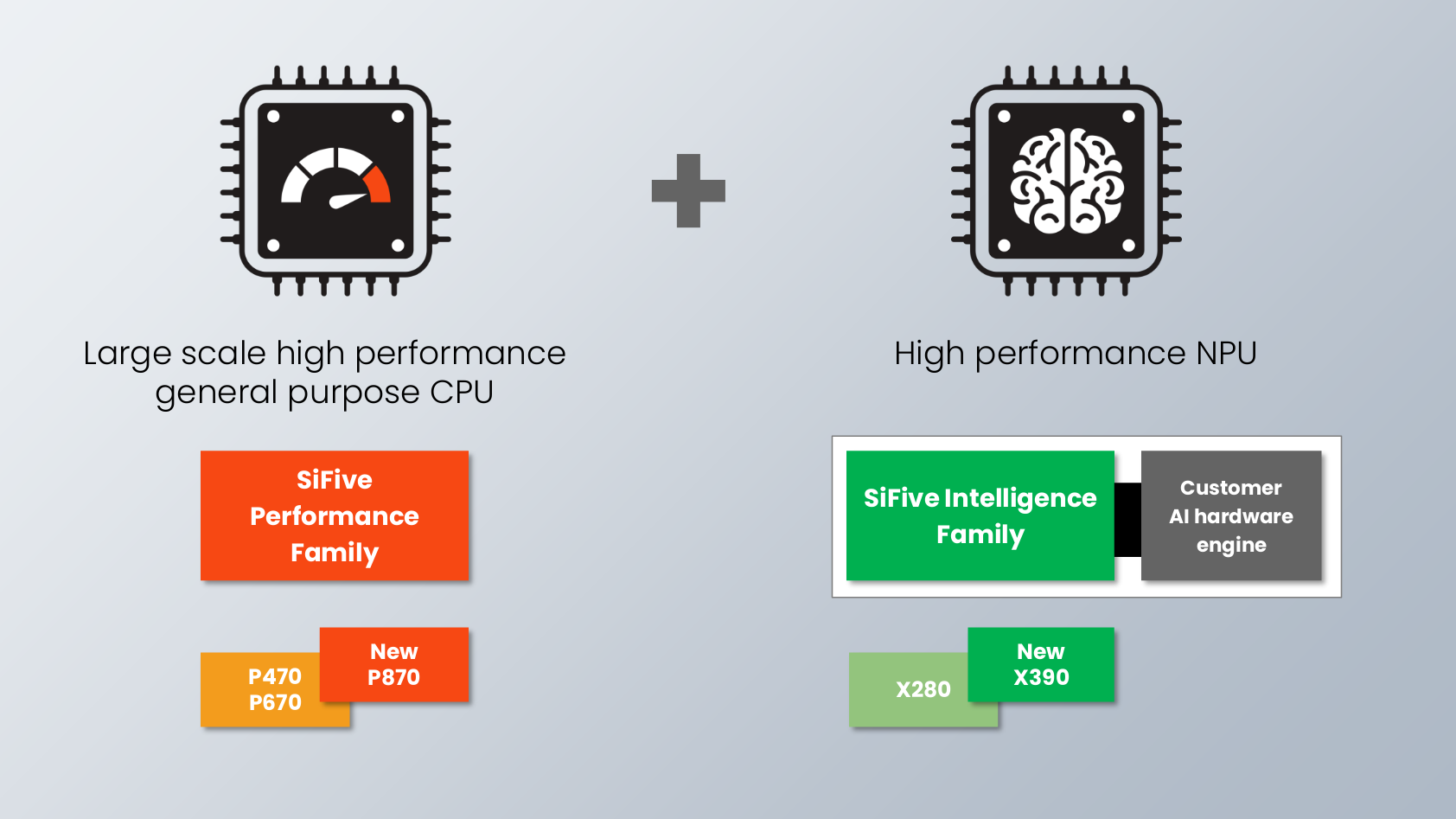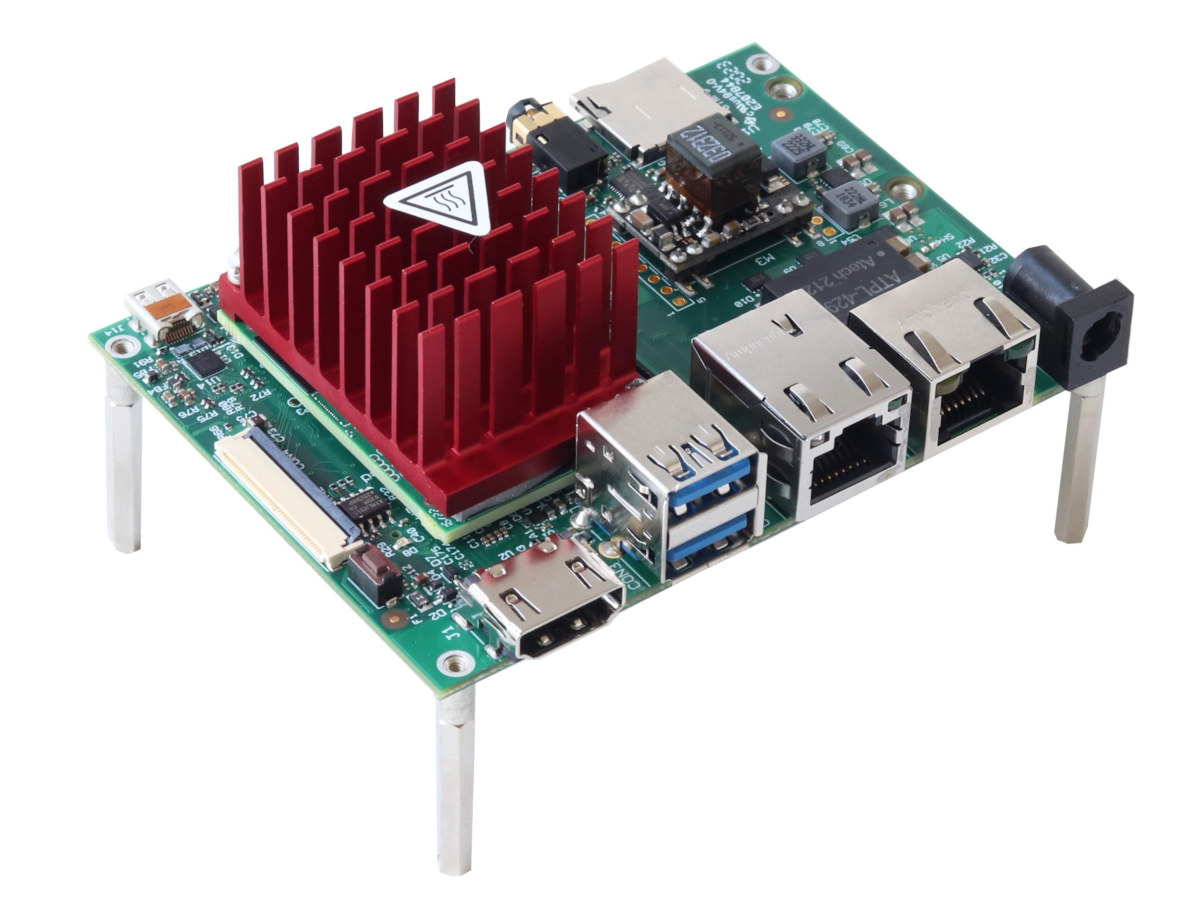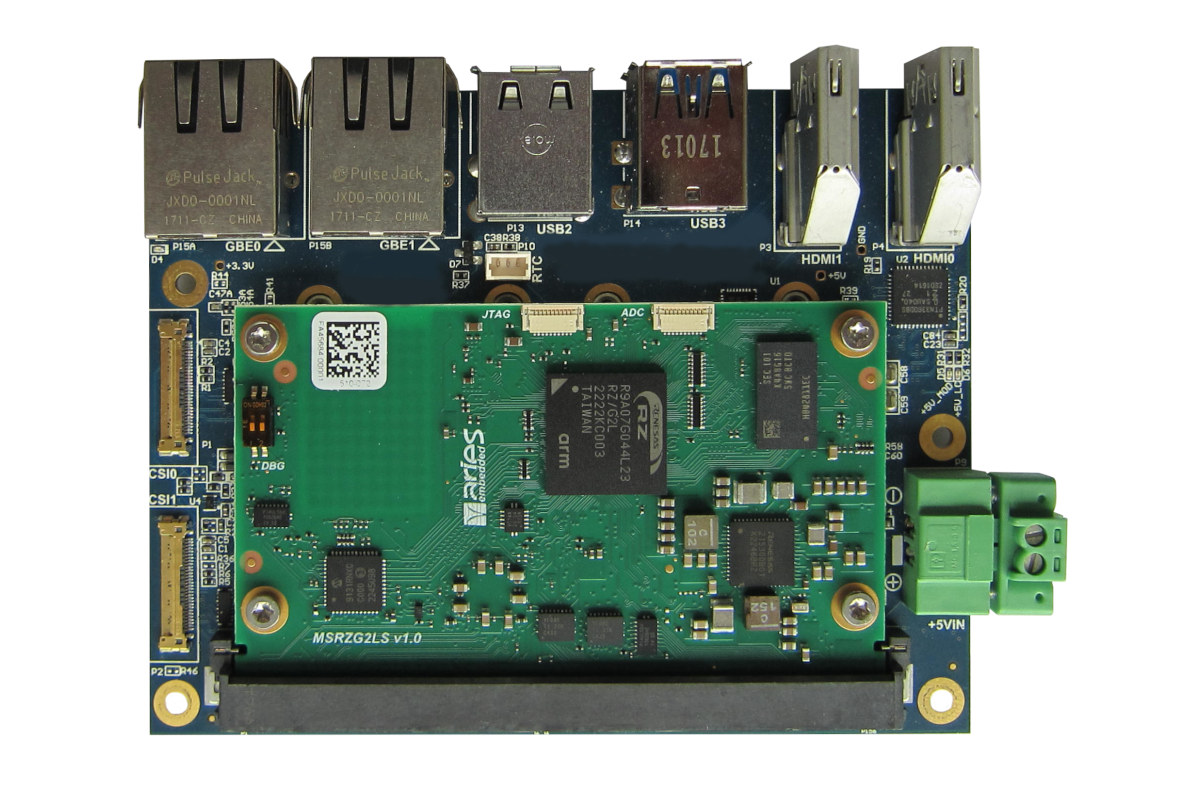Qualcomm has now provided Arm chips for mobile PCs (aka laptops) for several years, but apart from a 20-hour battery life, the performance and price of Snapdragon laptops have often been disappointing. The Snapdragon X Elite aims to change that at least on the performance front. The new Qualcomm 12-core 64-bit Arm processor is clocked at up to 3.8 GHz boosting to up to 4.3 GHz, and is said to deliver up to twice the CPU performance against the competition (Intel/AMD/Apple) or provides the same level of performance at a third of the power consumption. The SoC will also be able to run on-device generative AI with over 13B parameters thanks to 75 TOPS of AI performance and support the latest wireless connectivity technologies such as 5G and WiFi 7 through external chips from the company. Qualcomm Snapdragon X Elite specifications: CPU – 12-core 64-bit Armv8 Oryon processor clocked at […]
CanMV-K230 AI development board features Kendryte K230 dual-core 64-bit RISC-V processor
CanMV-K230 is a credit card-sized development board for AI and computer vision applications based on the Kendryte K230 dual-core C908 64-bit RISC-V processor with built-in KPU (Knowledge Process Unit) and various interfaces such as MIPI CSI inputs and Ethernet. The first Kendryte RISC-V AI processor was launched in 2018 with the K210 which I tested with the Grove AI HAT and Maixduino board and found fun to experiment with, but noted that performance was limited. Since then the company introduced the K510 mid-range AI processor with a more powerful 3 TOPS AI accelerator, and the K230 entry-level successor to the K210 – which was planned for 2022 in a 2021 roadmap – has now just been launched and integrated into the CanMV-K230 development board. CanMV-K230 specifications: SoC – Kendryte K230 CPU 64-bit RISC-V processor @ 1.6GHz with RISC-V Vector Extension 1.0, FPU 64-bit RISC-V processor @ 800MHz with support for […]
Sophgo SG2380 – A 2.5 GHz 16-core SiFive P670 RISC-V processor with a 20 TOPS AI accelerator
Sophgo SG2380 is an upcoming 2.5 GHz 16-core RISC-V processor based on SiFive Performance P670 cores and also equipped with a 20 TOPS AI accelerator using SiFive Intelligence X280 and Sophgo TPU that will find its way into a $120 desktop-class mini-ITX motherboard in H2 2024. The RISC-V processor also supports up to 64GB RAM, as well as UFS 3.2 and SATA 3.0 storage, comes with an Imagination GPU for 3D graphics and a VPU capable of 4Kp60 H.265, H.264, AV1, and VP9 video decoding, plenty of interfaces, and the system can manage locally deployed larger-scale LLMs like LLaMA-65B without the need for external NVIDIA or AMD accelerator cards. Sophgo SG2380 RISC-V SoC Sophgo SG2380 specifications: CPU 16-core SiFive P670 (RV64GCVH) 64-bit RISC-V processor @ up to 2.5GHz with RISC-V Vector v1.0, Vector Crypto Cluster configuration – 12x 2.5 GHz performance cores, 4x 1.6 GHz efficiency cores Full RISC-V RVA22 […]
Generative AI on NVIDIA Jetson Orin, Jetpack 6 SDK to support multiple OSes
NVIDIA has had several announcements at ROSCon 2023 related to robotics & embedded with highlights including generative AI on the NVIDIA Jetson Orin module and the Jetpack 6 SDK will be released next month (November 2023) with supports for Ubuntu as usual, but also other operating systems and platforms such as Debian, Yocto, Wind River, Redhawk RTOS, and Balena. Generative AI on NVIDIA Jetson Orin There’s been a lot of hype in the last year about generative AI thanks to services such as ChatGPT, Google Bard, or Microsoft Bing Chat. But those rely on closed-source software that runs on powerful servers in the cloud. As we noted in our article about the “AI in a box” offline LLM solution there are some open-source projects such as Whisper speech-to-text model and Llama2 language models that could be run on embedded hardware at the edge, but as noted by some readers platforms […]
SiFive announces Intelligence X390 NPU, Performance P870 RISC-V core
SiFive has announced two new high-performance IP blocks with the Intelligence X390 NPU and the Performance P870 RISC-V core that should find their way into SoC designed for Generative AI and ML applications. We had already covered the Performance P870 and its automotive sibling – the P870-A – from information in an earlier presentation, but the SiFive Intelligence X390 NPU is new to me and appears to be aimed at generative AI in data centers, although we will very soon be seeing companies implement generative AI at the edge in pretty powerful embedded devices. SiFive Performance P870 highlights: Full support for the RVA23 RISC-V profile specification and Vector 1.0 and Vector Crypto Six-wide, out-of-order 64-bit core Up to a 32-core cluster >12 SpecINT2k6/GHz, or a 50% peak single thread performance upgrade over the previous generation SiFive Performance P670 SiFive Features 2x 128b VLEN RVV Vector crypto and hypervisor extensions IOMMU […]
Hummingboard 8P Edge AI SBC combines NXP i.MX 8M Plus SoC with Hailo-8 AI accelerator
Hummingboard 8P Edge AI Pico-ITX SBC combines an NXP i.MX 8M Plus processor – itself with a 2.3 TOPS NPU – with the 26 TOPS Hailo-8 AI accelerator for edge AI applications such as smart cameras and automated optical inspection. The compact board comes with up to 8GB RAM, up to 128GB eMMC flash, two gigabit Ethernet ports including one with PoE, WiFi 5, a MIPI camera interface, HDMI and micro HDMI ports, two USB 3.0 ports, and more. Hummingboard 8P Edge AI specifications: SoC – NXP i.MX 8M Plus quad-core Cortex-A53 @ up to 1.8 GHz with Arm Cortex-M7 @ up to 800 MHz, Vivante GC7000UL 3D GPU, Vivante GC520L 2D GPU, 2.3 TOPS NPU System Memory – Up to 8GB LPDDR4 Storage – Up to 128GB eMMC flash, microSD card slot AI accelerator – M.2 Hailo-8 module delivering up to 26 TOPS Video Output – HDMI and Micro […]
Android 14 released, source code hits AOSP
Google has just released Android 14 for supported devices such as Google Pixel phones and pushed the source code to AOSP (the Android Open-Source Project). Most of the changes to the fourteenth version of the Android operating system were introduced with the first Android 14 developer preview – released in February 2023 – which included performance improvements, better privacy and security, and additional user-side customization options. Some of the new features unveiled since the first Android 14 developer preview include: AI-generated wallpapers using text-to-image diffusion models to help users easily create unique wallpapers HDR images with Ultra HDR (Android 13 already supported HDR videos) Built-in Health Connect support to let people track their fitness, health, and wellness levels across apps in a secure way respecting privacy. Android 14 encourages users to set a six-digit PIN (or longer) to improve security. Improved accessibility with vision-and hearing-inclusive features such as an enhanced […]
Renesas RZ/G2L and RZ/V2L SMARC 2.1 system-on-modules target HMI and Edge AI applications
ARIES Embedded has recently launched two SMARC-compliant MRZG2LS and MRZV2LS system-on-modules (SoM) powered by respectively a Renesas RZ/G2L dual-core Cortex-A55/M33 microprocessor with Arm Mali-G31 GPU and H.264 video codec (H.264) and a similar Renesas RZ/V2L MPU adding a built-in ‘DRP-AI’ AI accelerator for vision applications. Those are the first SMARC modules from the company and they are well-suited for applications such as entry-class industrial human machine interfaces (HMIs), embedded vision, edge artificial intelligence (edge-AI), real-time control, industrial Ethernet connectivity, and embedded devices with video capabilities. ARIES Embedded MRZG2LS and MRZV2LS key features and specifications: SoC – Renesas RZ/G2L or GZ-V2L with Application CPU – Single or dual Arm Cortex-A55 up to 1.2GHz Real-time core -Arm Cortex-M33 GPU – Arm Mali-G31 VPU – H.264 codec AI accelerator – DRP-AI on Renesas RZ/V2l only (MRZV2L SoM) System Memory – 512MB to 4GB DDR4 RAM Storage – SPI NOR flash, 4GB to 64GB […]


